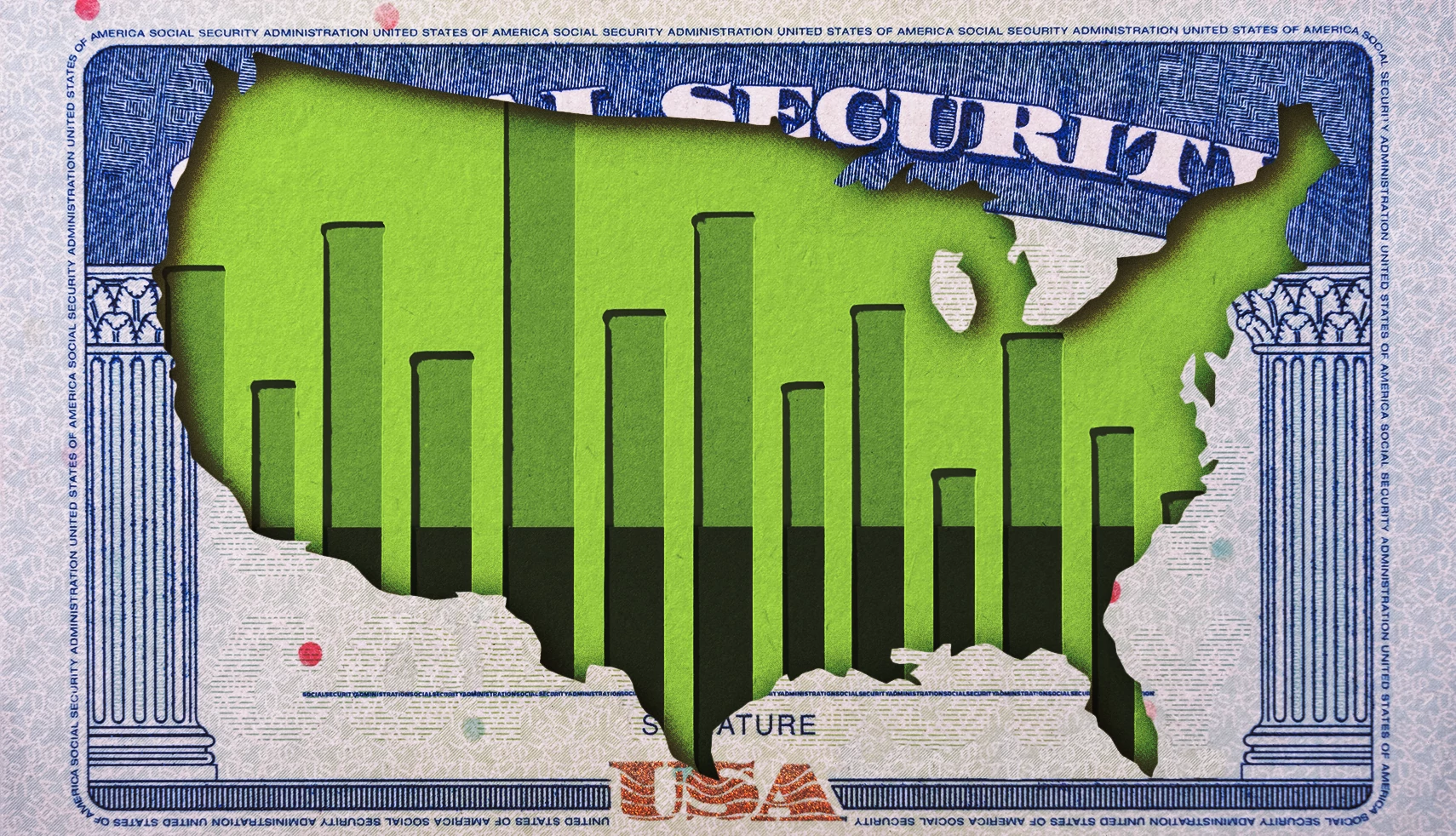AARP Hearing Center


Social Security has always been about numbers, ever since it was established 90 years ago this month by President Franklin D. Roosevelt’s signature on a historic act of Congress.
You work 10 years, earn 40 Social Security credits, and you are eligible for benefits when you retire. A complex mathematical formula determines how much you’ll get each month. A 12.4 payroll tax on almost all U.S. workers’ income provides the funding that keeps benefits flowing to (as of June 2025) more than 69 million Americans. A unique nine-digit code assigned to each of us keeps it all straight.
Those are the basics. Behind the numbers lies a deeper story of how Social Security has grown into the largest federal program and one of the most popular and how cascading demographic and economic changes are threatening the program’s ability to meet its full commitment to retirees and their families.
Here are eight key numbers, with accompanying infographics, that illustrate Social Security's evolution, where it is today, and where it might be headed unless lawmakers take action to keep the program's promise to all Americans.
182.8 million
More than 67 million people, or nearly 1 in 5 Americans, were receiving a monthly Social Security payment at the end of 2023, according to Social Security Administration (SSA) data. (The number has since risen as federal legislation enacted in late 2024 restored full benefits to many former government workers who had their Social Security reduced or eliminated by a pension offset.)
But they are far from the only ones for whom the state of the Social Security system matters greatly. Nearly 183 million workers — about 54 percent of the population — pay into Social Security via dedicated taxes on wages and self-employment income. That number has increased almost fourfold since 1950 as the U.S. workforce has expanded and diversified.
1975
In 1972, Congress passed legislation mandating an annual cost-of-living adjustment (COLA) for Social Security payments, effective three years later. For the program’s first 40 years, benefits stayed the same unless Congress approved an inflation adjustment. For the past 50 years, COLAs have been automatic, based on year-to-year changes in consumer prices. The dotted line on the graph shows the sharp upward trajectory in the average retirement benefit since then. Even when adjusted for inflation (the solid line), payments have steadily risen.
The COLA is imperfect — it can lag behind sharp spikes in inflation, for example, and some critics say the federal inflation measure used to calculate it doesn’t accurately capture older Americans’ expenses. But it does guarantee that, unlike most 401(k) plans, Social Security benefits provide protection over time against rising prices.


































































More From AARP
Social Security Turns 90
The program that transformed aging in America reaches a milestone this year. Explore how it started, where it's headed, and why fighting for it is as important as ever.These 7 Americans Depend on Social Security
Caregiving, health emergencies, business woes derailed their plans
Does Social Security Cover Costs in Your State?
See how benefits compare with living costs in your state